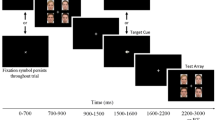Abstract
Embarrassment is a genuine human emotion that we experience while being publicly exposed in unfavorable situations. The embarrassment we feel informs us how we perform according to prevalent norms and moral values and helps to regulate the impression we make on others. One cornerstone of embarrassment is the capacity to take another’s perspective and reflect on the thoughts, feelings, and intentions of others. On the neural systems level, these processes of perspective taking are linked to neural activation in the medial prefrontal cortex and precuneus. In addition, the mishap and the expected negative evaluation induce affective arousal and activity in the anterior insula and anterior cingulate cortex. Both networks contribute to the experience of embarrassment and it is their orchestrated activity in the (para-)limbic system that accounts for this complex emotional phenomenon. From a conceptual point of view embarrassment thus presupposes the presence of others. This witnessing audience however also reacts to the mishaps of others and embarrassment may also be experienced vicariously. Here, processes of perspective taking also play an important role, while bystanders embody threats to another’s social integrity. Such interpersonal emotional phenomena gain particular relevance in the context of psychiatric disorders. Specifically, autism spectrum disorders and social anxiety disorders have core symptoms in the social domain that manifest in social interactions causing disturbances in social behavior and reduced well-being of affected individuals.


Similar content being viewed by others
References
Frith U, Frith CD (2003) Development and neurophysiology of mentalizing. Philos Trans R Soc Lond B Biol Sci 358:459–473
Gilovich T, Medvec VH, Savitsky K (2000) The spotlight effect in social judgment: an egocentric bias in estimates of the salience of one’s own actions and appearance. J Pers Soc Psychol 78:211–222
Keltner D, Buswell BN (1997) Embarrassment: its distinct form and appeasement functions. Psychol Bull 122:250–270
Keysers C, Gazzola V (2006) Towards a unifying neural theory of social cognition. Prog Brain Res 156:379–401
Krach S, Cohrs JC, Echeverría LNC de, Kircher T, Sommer J, Jansen A, Paulus FM (2011) Your flaws are my pain: Linking empathy to vicarious embarrassment. PLoS ONE 6:e18675
Lamm C, Decety J, Singer T (2011) Meta-analytic evidence for common and distinct neural networks associated with directly experienced pain and empathy for pain. Neuroimage 54:2492–2502
Müller-Pinzler L, Krach S, Krämer U, Paulus FM (2016) The social neuroscience of interpersonal emotions. In: Wöhr M, Krach S (eds) Social Behavior from Rodents to Humans: Neural Foundations and Clinical Implications Curr Topic. Springer, Berlin
Müller-Pinzler L, Rademacher L, Paulus FM, Krach S (2016) When your friends make you cringe: social closeness modulates vicarious embarrassment-related neural activity. Soc Cogn Affect Neurosci. 11(3):466-75. DOI: 10.1093/scan/nsv130
Paulus FM, Müller-Pinzler L, Jansen A, Gazzola V, Krach S (2015) Mentalizing and the role of the posterior superior temporal sulcus in sharing others’ embarrassment. Cereb Cortex 25:2065–2075
Tangney JP, Stuewig J, Mashek DJ (2007) Moral emotions and moral behavior. Annu Rev Psychol 58:345–372
Vignemont F de, Singer T (2006) The empathic brain: how, when and why? Trends Cogn Sci 10:435–441
Wager TD, Atlas LY, a LM, Roy M, Woo C‑W, Kross E (2013) An fMRI-based neurologic signature of physical pain. N Engl J Med 368:1388–1397
Author information
Authors and Affiliations
Corresponding author
Ethics declarations
Conflict of interest
S. Krach, L. Müller-Pinzler, L. Rademacher, D.S. Stolz and F.M. Paulus state that there are no conflicts of interest.
The accompanying manuscript does not include studies on humans or animals.
Additional information
This article has been translated from German to English by Karin Moan, Leimen.
Rights and permissions
About this article
Cite this article
Krach, S., Müller-Pinzler, L., Rademacher, L. et al. Neuronal pathways of embarrassment. e-Neuroforum 7, 37–42 (2016). https://doi.org/10.1007/s13295-016-0024-4
Published:
Issue Date:
DOI: https://doi.org/10.1007/s13295-016-0024-4




